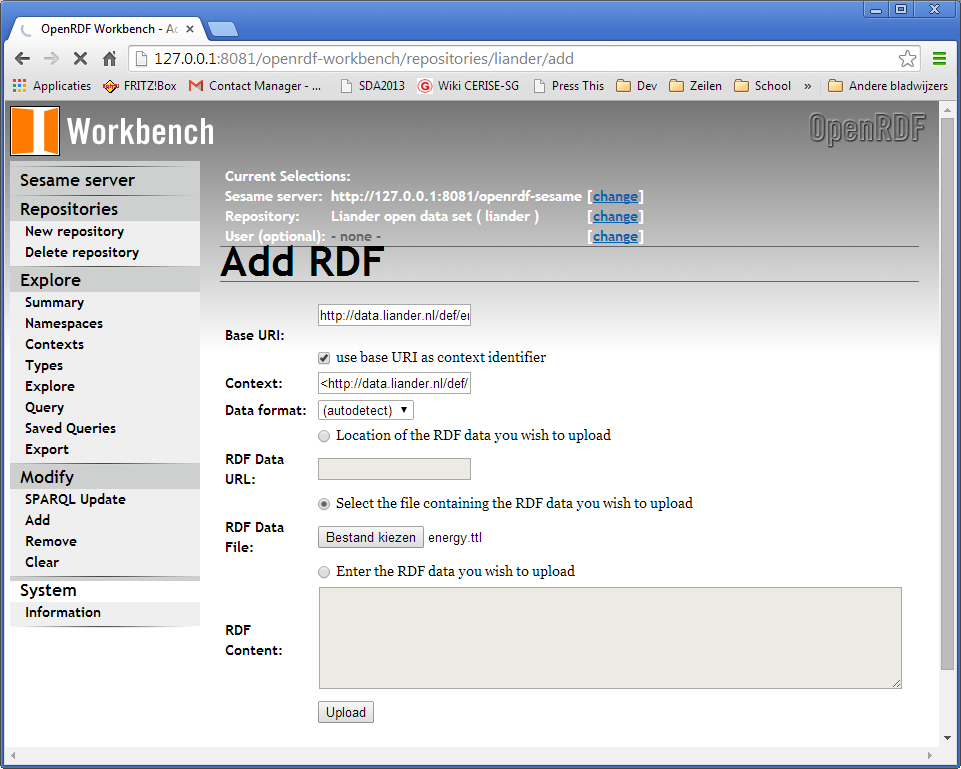Example Step 8: Publish the data
In this step we make the dataset available on the internet. We have different options for publishing the dataset. A good practice is to use multiple ways, so that data users have a choice and can select the method that best suits their purposes. Firstly, we publish the dataset as a flat file. We do this in two often used syntaxes, i.e., RDF/XML (.rdf) and Turtle (.ttl). LODRefine, the tool we used to convert the data to RDF in step 5 can export to both formats. The resulting files can simply be put on a webserver at data.liander.nl. A better way to make the data available is to store it in a triple store and serve it through a SPARQL-endpoint. In this case we use Sesame, an open source framework for storing and querying RDF data (see http://openrdf.org). Sesame can be installed on an appropriate server, e.g., data.liander.nl. A web interface, the OpenRDF Workbench (shown in the figure below), enables us to create a new RDF repository and upload the RDF triples we created in step 5 from a file.
Once the data is uploaded to Sesame, users can query the dataset with SPARQL, the standard query language for linked data.


